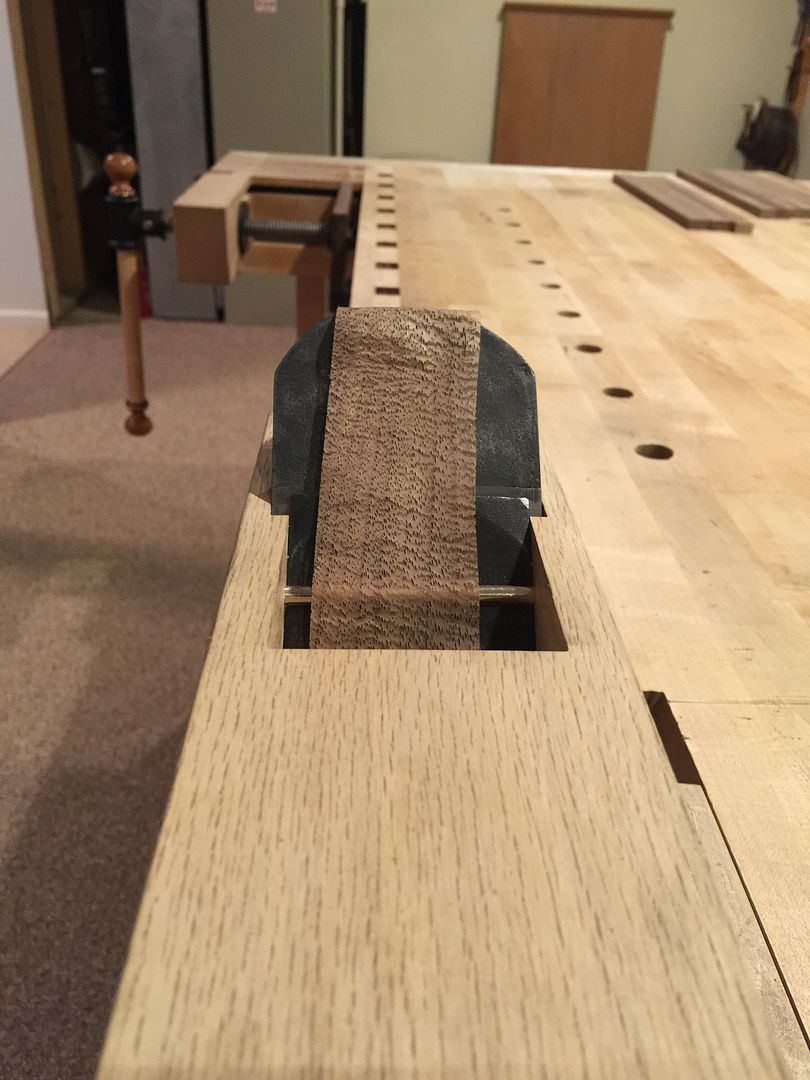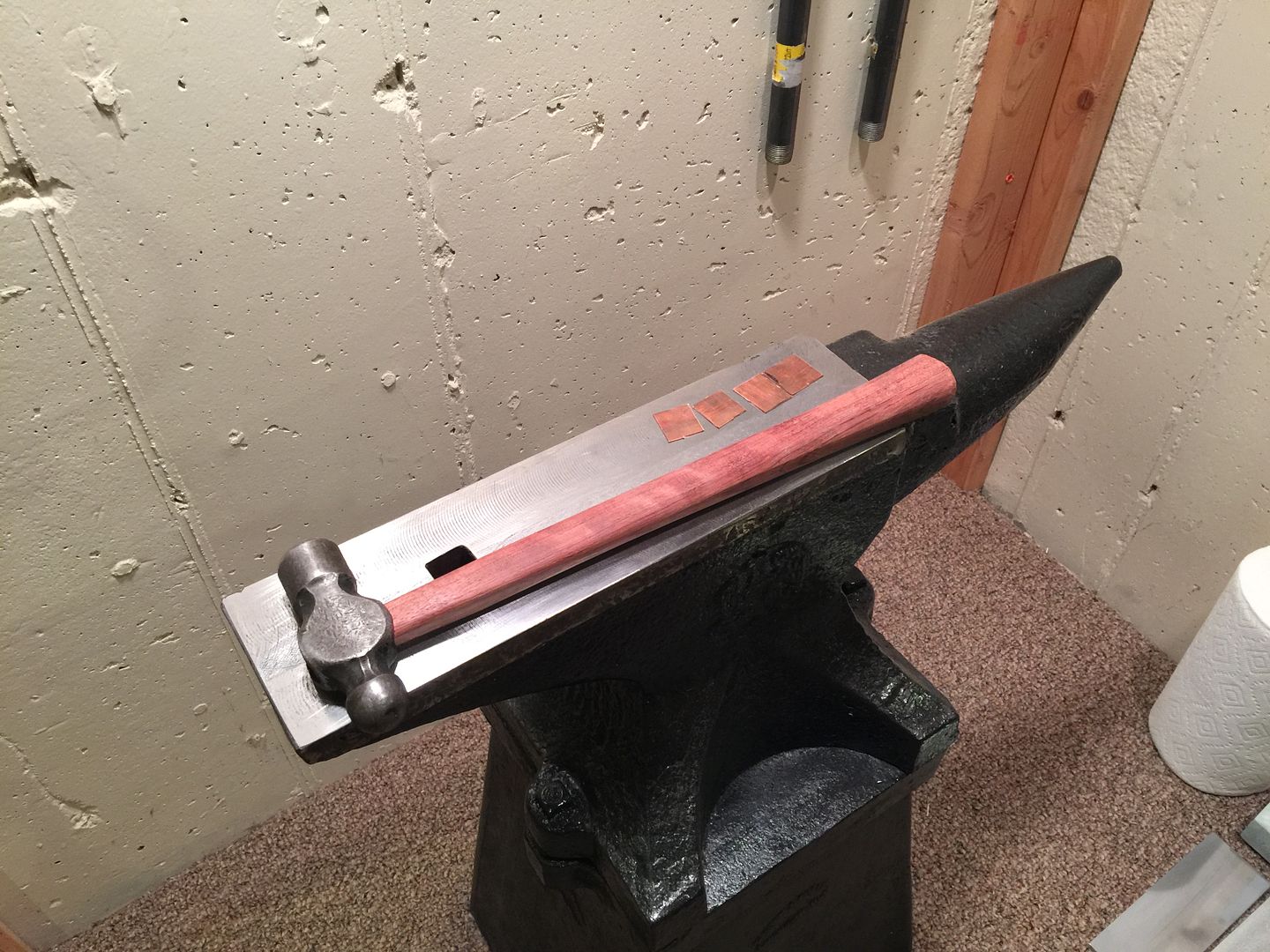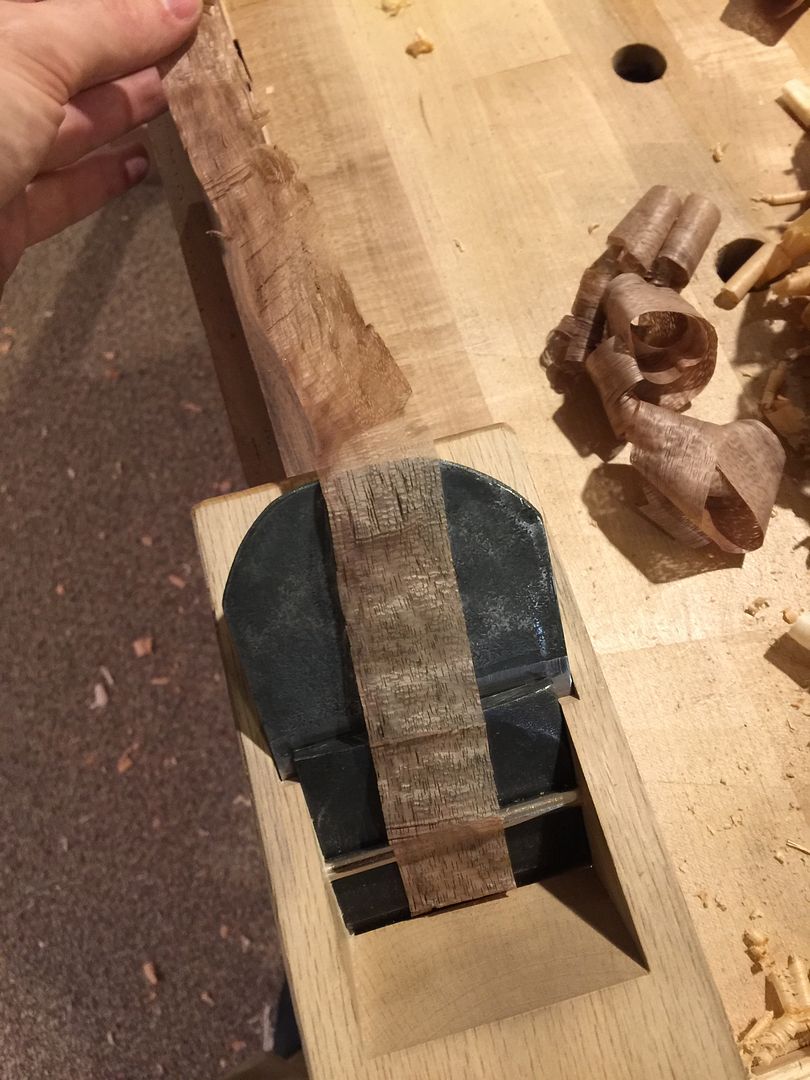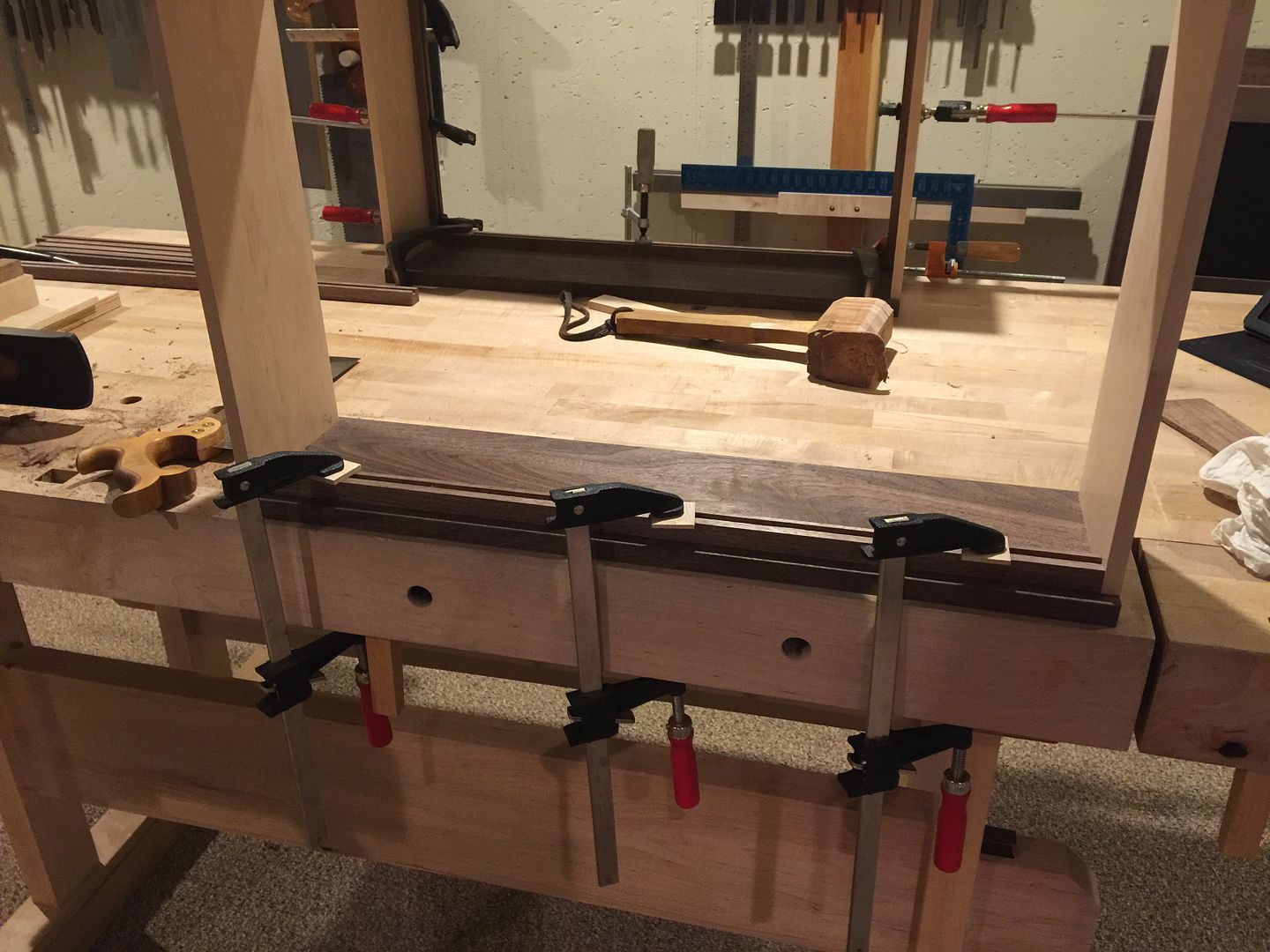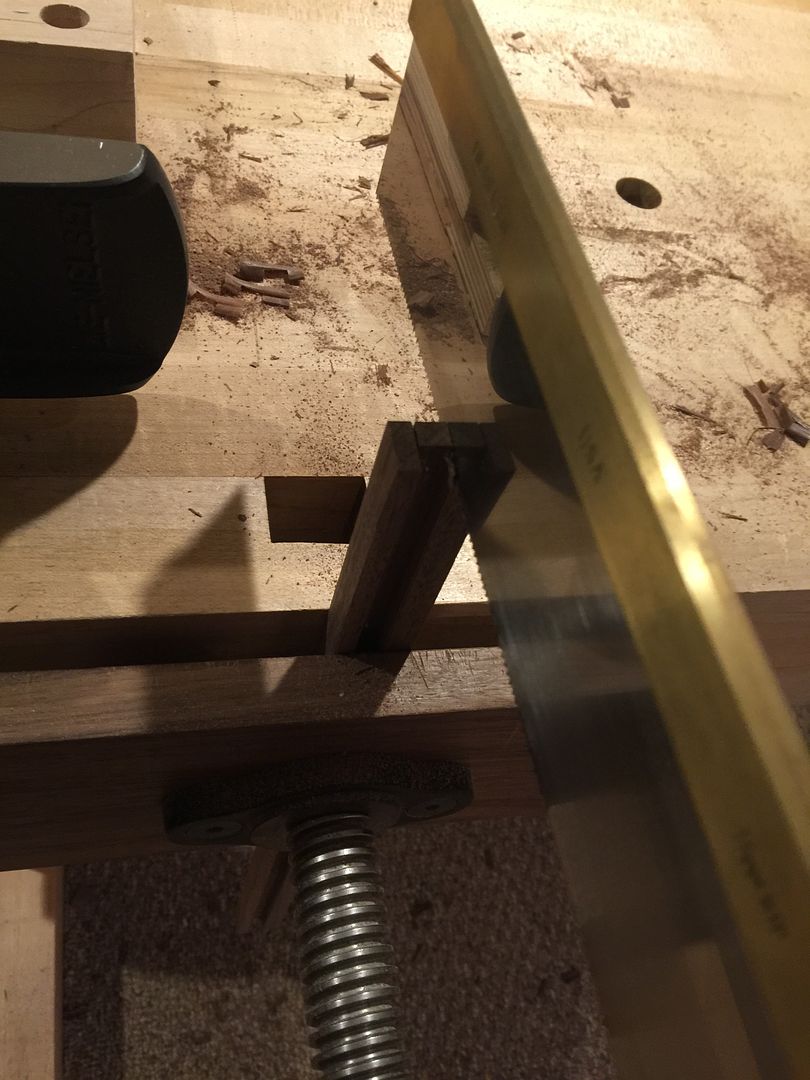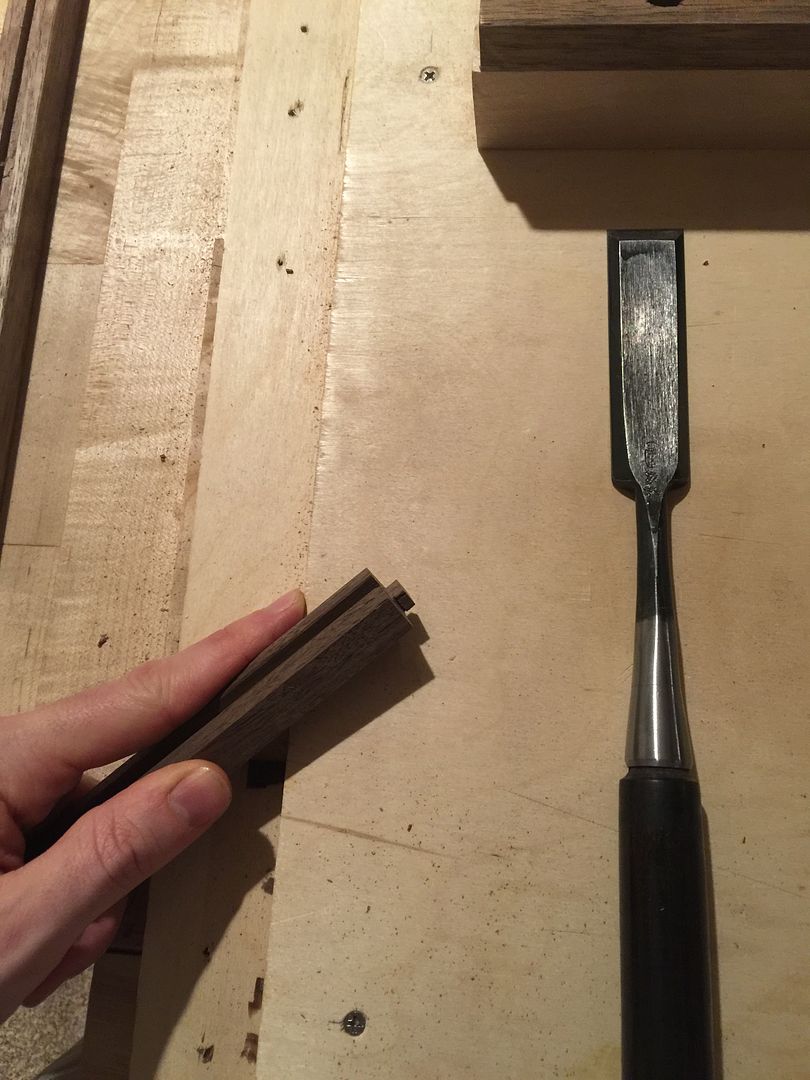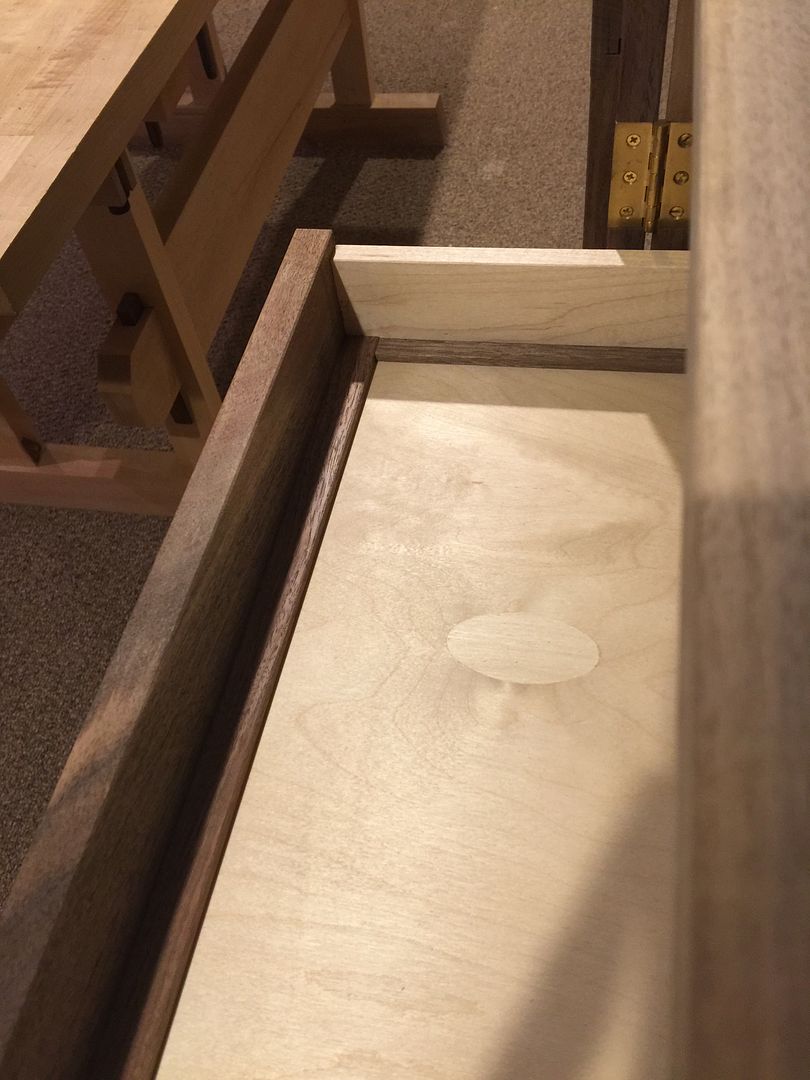The iron is by Yokoyama Kunio in Tougou Kou and the dia maker is Nimura-san.
I bedded the iron, and set the chipper, but have yet to actually tune the sole beyond a little tiny bit required after bedding the blade. I have a feeling that once I am able to tune the sole (waiting a few weeks/months for the wood to adjust to my humidity level) I should be able to get a super thin shaving (this one is like .001"~). I dont need anything like 10 micron, but I could go for about double that.
I'll probably end up getting a few of these probably from a few makers and setting them for different humidity levels and different cuts.
I thought the iron would be a lot of work, since his cold worked irons are generally somewhat 'rustic' but it was pretty spot on, needing minor ura-dashi to bring down one corner. The chipper needed quite a bit of work and still needs a little fine tuning.
Last edited by Brian Holcombe; 10-23-2015 at 11:20 PM.
Bumbling forward into the unknown.





 Reply With Quote
Reply With Quote
